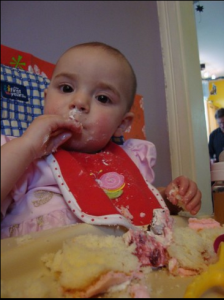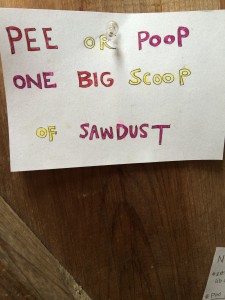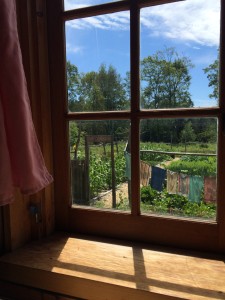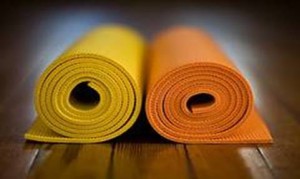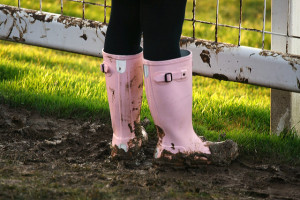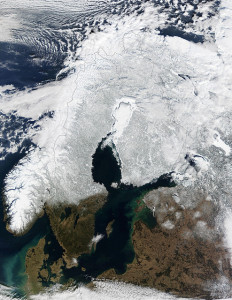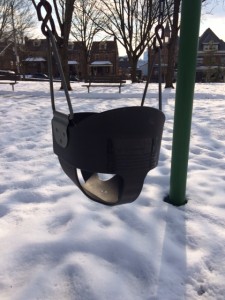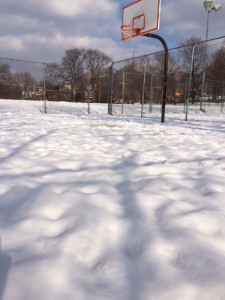I didn’t notice any trouble until he called the police–I was too distracted by the sunlight. Our kitchen windows are six feet tall, and on sunny afternoons like this one, the yellow walls gleamed, the dirty dishes on the counter shone. Thump, thud. It was still early spring, and the windows were closed, muffling the clanging, banging and thumping coming from across the street.
I looked out. Two men were loading our former neighbor’s belongings into a pickup truck. Her house had sat vacant for a year after she moved into a senior building, now her appliances were heading out the door. “I tried to talk to them,” my housemate said, “and they blew me off. The cops are on their way.”
“Oh,” I said, “oh, I see.” He walked out to the porch to see what would happen, and I sank down on the kitchen stool, staring at the floor. Calling the police was complicated. We couldn’t just sit by and watch while our neighbor’s house was emptied, but they would know who called–the white people, again–and what if the men were rude to the officers too? “No one get shot, no one get shot,” I prayed as I peeked out the window.
No one got shot. The police arrived, they talked, the next door neighbor came out, and soon everyone was laughing amiably. As the cops drove away, embarrassment settled in, hard. “I hate this,” I thought, “Why are we always the ones to overreact? It’s the middle of the day, of course they weren’t doing anything wrong.” My housemate came back in and noticed my discomfort.
“I’ll take care of it,” he said, and disappeared into the basement, returning a moment later with two bottles of beer. Clink, clank, he marched out the door. Peeking out the window again, I watched him approach the men, somewhat in awe at his nerve. He was talking, they were talking, he handed them the beer, and he walked back to our house. “Whew,” he shut the door, “Turned out they were family of a neighbor, everything’s alright. Glad I apologized.”
“They took the beer,” I said, still a little surprised. “Yeah,” he shrugged, grinning, “Sometimes a beer can turn an enemy into a friend. They’re good guys, just a little surly at first.”
And that was that. Two beers–the solution for all your cross-cultural tensions.
*****
With a big word like gentrification, it’s tempting to just talk about it at a macro-level. Government, development, public policy–all of this matters. But there is also the everyday reality of living in close quarters with people who are not ‘like me,’ and trying to get along.
This can be exhausting, and, like deciding whether to call the cops, more complicated than I ever imagined. But I suspect that mixed-income communities (or any communities) succeed or fail, ultimately, at the micro-level. In other words, can the people who live next door to one another learn to be neighbors?
On our block are middle-class working families–healthcare workers, retired city bus drivers, preschool teachers–and families who subsist on minimum wage jobs, food stamps and medicaid. The black folks (about three-quarters of our block) have generally lived in our neighborhood their whole lives and have family scattered about the community; the white folks are relative newcomers and have family scattered about the country.
And there are times when living together can be stressful and bumpy. There are misunderstandings and mistakes; there are awkward moments. Soon after I moved in, a well-meaning man said to me, “Don’t you worry, dear, my mother and I are glad that you’re here. We’re not like everyone else.”
And I thought, “It’s a good thing that ‘everyone else’ is too polite to say!”
However, there are also moments when I think that living where I live, and learning to get along with people who are not ‘like me’, is perhaps one of the richest experiences of my life.
One of my favorite neighbors is a grandmother who is working toward her GED while raising her grandkids. We go to church together, and her youngest loves to chase our chickens around the backyard. One day I gave her a ride to the bus stop, and as we were chatting about kids, weather, and leaking chimneys, I suddenly realized how much I needed this woman to be my neighbor.
There is a lot of talk, a lot of research, about how mixed-income communities benefit the poor–there can be increased employment opportunities, for example, and their kids tend to have higher social mobility–but what struck me in that moment, and has stayed with me since, is the sense of how much the rich (or at least the relatively rich) benefit from living near the poor.
I give my neighbor a ride, but she gives me insight I could get no other way. I watch her sacrifice for her grandkids while taking one GED class at a time, I watch her struggle, and I watch her pray. I watch her maintain faith and a sense of humor in the midst of situations that might just do me in.
She (and others) also give me financial perspective. When asked why they moved to our neighborhood, one family said, “We didn’t want our kids to think that it was normal to have a Rolex.” Having neighbors who work full time and yet struggle to buy fresh vegetables tempers my materialism. It also reminds me to be grateful at the farmer’s market. It’s not a guilt trip; it’s a reality adjustment.
Finally, speaking of reality, there is just something about living with people who freely admit they don’t have it all together. My neighbors have kids in jail, various addictions, and teenage pregnancies. While we’re all messed up in one way or another, the poor tend to wear their wounds on the outside. When I see this, and then see these same people embraced in spite of their (sometimes still oozing) wounds, something inside of me is also set free.
All this doesn’t happen in one trip to the bus stop, but over a decade or so, it begins to sink in: I need my neighbor because in the moments when I am her chauffeur, she is my teacher. This is a small step, but isn’t this the way that neighborhoods are built?
One ride,
one conversation,
one adjustment of perspective,
one mistake and one apology,
two beers at a time.

Photo by Wagner T. Cassimoro
